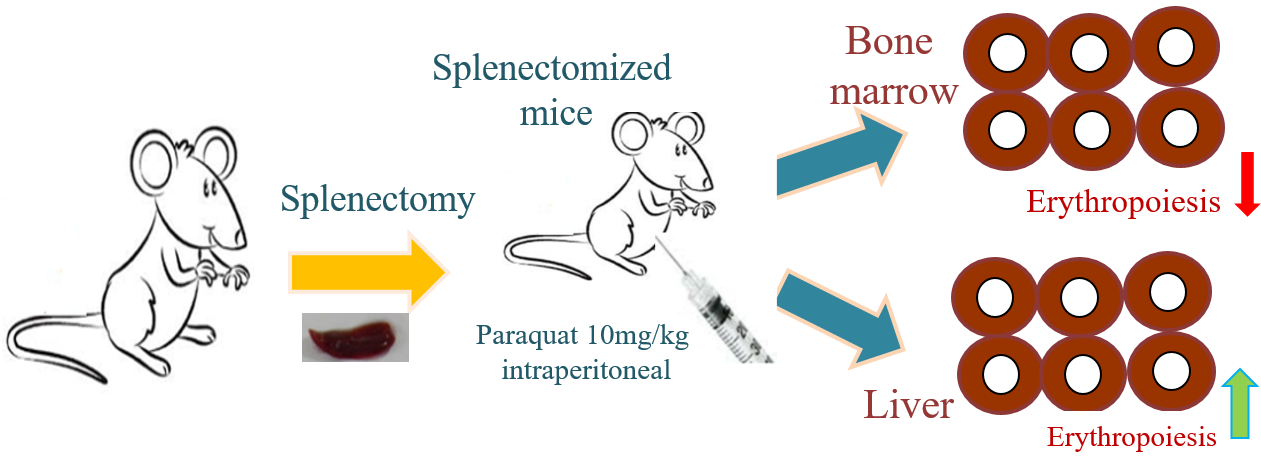Paraquat treatment modulated the stress erythropoiesis response in bone marrow and liver of the splenectomized mice

Keywords:
Erythrocyte, Erythropoiesis, Splenectomy, Bone marrow, Flow Cytometry, Reactive Oxygen SpeciesAbstract
Spleen serves as a secondary lymphoid and primary erythropoietic organ in neonates and in acute anemic conditions. Splenectomy is the process of surgical removal of spleen, which is used for the treatment of a number of anemic, leukemia and lymphoma patients. In the present investigation, we have analyzed the modulation of stress erythropoietic response in splenectomized condition. The splenectomized mice were treated with the repeated doses of paraquat (10 mg/kg intra-peritoneal on alternate days). Erythroid progenitor cells in bone marrow and liver were examined by staining with the anti-glycophorin (anti-Ter119) and transferrin (CD71) and monitoring the receptor expression. Paraquat treatment shows a moderate effect on the blood erythrocytes count, hemoglobin levels and reticulocytes percentages in blood circulation however induced the production of reactive oxygen species (ROS) in erythrocytes of splenectomized mice. The relative proportions and absolute recoveries of erythroid precursor cells in bone marrow were declined significantly at earlier time points post paraquat treatments. However, these cells begin to recover from day 14 and 21 and come to basal level on day 28. The proportion of erythroid cells in liver was slightly decreased on day 7 but it increased significantly on day 14. Interestingly, the proliferative activity of erythroid cells in the bone marrow increases, probably to compensate the loss of erythrocytes in circulation



